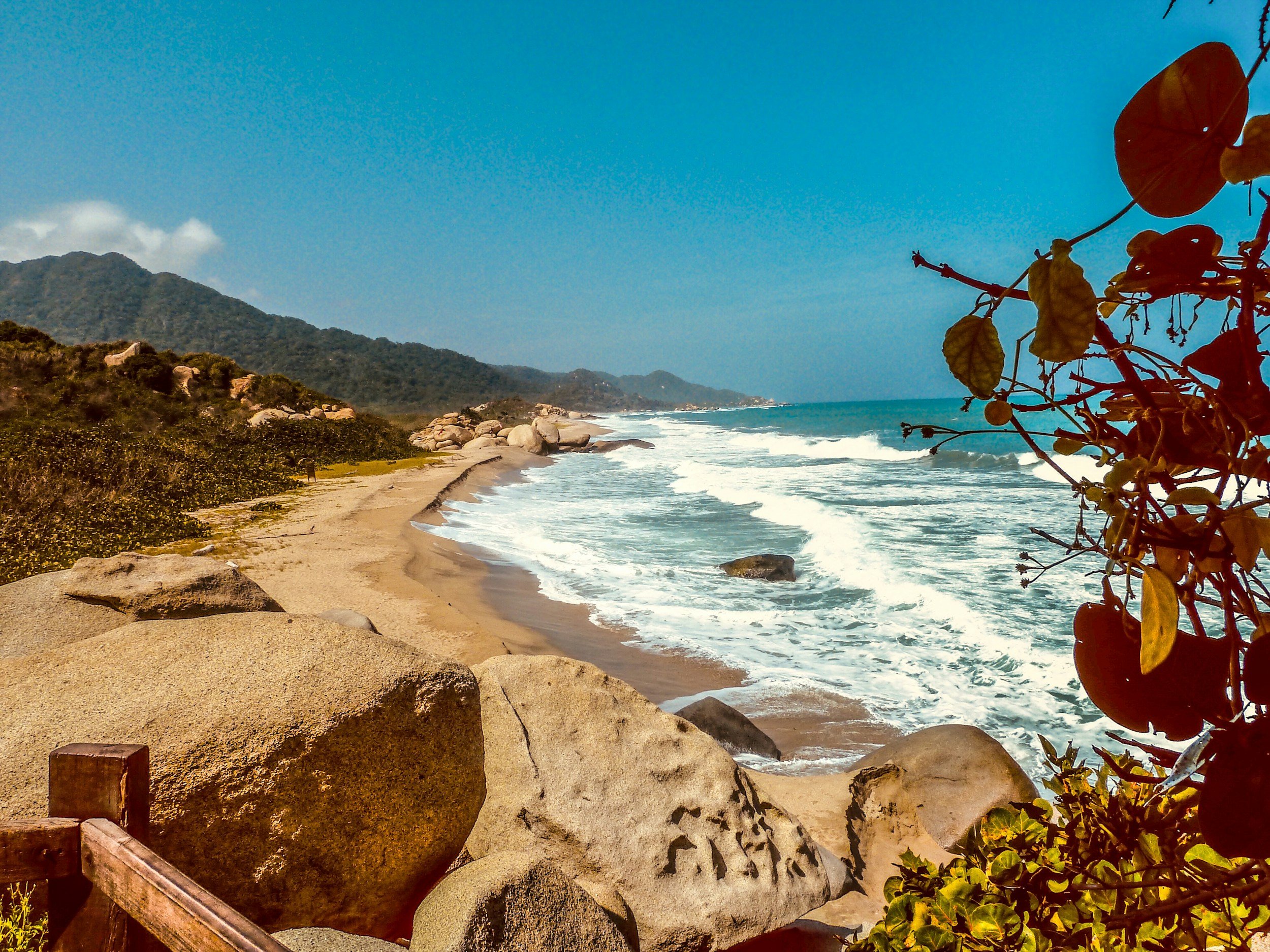The Untold Stories of Colombia’s Caribbean
Why this overlooked region deserves your undivided attention.
Tayrona National Park is the tourism gateway to Colombia’s Caribbean coast.
Colombia’s Caribbean offers more than just Cartagena rooftops and Barranquilla’s carnival parade. Past the glossy influencer facades lies something deeper. Pre-Columbian cities are hidden in jungles. Sacred mountains are still revered by Indigenous communities. Coastlines that remember when countries and borders didn’t exist.
This is where the continent’s wild soul breathes. In the Wayuu’s desert resilience. In rivers that flow from glacier to sea, telling stories the map forgot. Through five stories of rhythm, resistance, and radical beauty, we trace what makes this coast unlike anywhere else in the Americas.
1. The Oldest City with the Youngest Soul
Santa Marta, founded in 1525 and Colombia’s oldest city, sits at a cultural crossroads. Colonial church bells now chime over reggaeton beats. Boutique hotels rise behind food stalls where Arepas de Yiya are still wrapped in banana leaves.
The magic here is in the contradictions. CorpoGuajira trains Wayuu women to lead cultural tours so that tourism dollars flow to communities, not just investors. A $300-a-night Airbnb stands beside a woman who’s been selling the same arepas for forty years.
Progress isn’t the yoga studios replacing bodegas. It’s in sunset scenes at the pier. Old men casting nets beside chefs sourcing seafood for their next pop-up. Santa Marta lives in these unstable equilibriums, where every tradition resists erasure by shaping its own future.
Santa Marta sits at the cultural crossroads of Colombia’s Caribbean coast. | Photo by Jhonny Salas Brochero
2. The Lost City That Was Never Lost
Tourists call it Ciudad Perdida, the Lost City. But for the Kogi, Wiwa, and Arhuaco peoples, it’s always been Teyuna. Nestled deep in the cloud forests of the Sierra Nevada, its 1,200-year-old stone terraces are reached after a four-day trek past waterfalls and sacred sites where Wiwa priests still perform "pagamentos", rituals to maintain balance with the land.
Teyuna is older and larger than Machu Picchu. It predates the Inca by centuries and receives only a fraction of the visitors. Why? It’s not just remote. It’s protected. You don’t discover it. You’re invited in.
In the BBC’s From the Heart of the World, the Kogi say the Sierra is where Earth begins. When its rivers dry or glaciers melt, they see it as Earth crying out because the “Younger Brother” (us) has forgotten how to care for it.
The real discovery at Teyuna isn’t ancient ruins, it’s recognizing how modern civilization lost its way. The “lost” ones aren't the Tayrona builders, but us.
Ciudad Perdida: the original Lost City of South America, tucked away in the Sierra Nevada.
3. The Costeño Contrast
Costeño culture is Colombia’s Caribbean heartbeat. A mix of Indigenous roots, African memory, Spanish legacy, and Middle Eastern migration. You can hear it in Vallenato’s European accordion riffs, taste it in cardamom-spiced arepas, and feel it in Champeta’s Congo-born basslines.
Between Riohacha and Cartagena, contradictions collide. Snow-capped mountains watch over desert nomads. Sacred rivers carry both Kogi offerings and tourist tubes. This isn’t just diversity. It’s elasticity. The costeño spirit adapts without breaking. A single bite of street food can hold 500 years of history and still taste like now.
Arepa de huevo and costeño cheese — a classic “costeño” breakfast.
4. The Geographic Wonder
In just 42 km (26 mi), the Sierra Nevada de Santa Marta rises from sea to snow. It’s the world’s steepest coastal elevation gain. At 6 am, motorbikes rumble toward the Palomino River, their passengers sweating in the tropical dawn while pointing their smartphones at the snow-capped Pico Colón glowing at 5,700 m (18,700 ft) in the distance.
This compact mountain range holds 27 ecosystems, from coral reefs to glaciers. Its rivers feed everything. Its peaks shape the weather. And for the Indigenous peoples who live here, it’s alive. The mountain gives, but only if you respect it.
Development threatens this balance. But the mountain has outlived empires. The question now is, will it outlast us?
Climbing from sea to summit toward Mirador de La Tagua. | Photo by Richard Swain
A local fisherman at work, moving to the rhythm of the ocean.
5. The Revolution in Slow Motion
Between Tayrona and Mendihuaca, Playa de los Cocos doesn’t move fast. It drifts.
Fishermen cast nets at dawn. Lunch is freshly fried cajinoa with coconut rice and ají. Pelicans fly low over wild surf. Hummingbirds hover by sea grapes. Hammocks sway under shade palms.
Just steps away, Kokkos Beach Hotel blends into the landscape. Sustainably and environmentally managed. It doesn’t disrupt the surroundings, it listens to it. With low-impact design, local materials, and an ESG approach at its core, it’s a quiet benchmark for how tourism can respect place, people, and pace.
Even the river here takes its time. Flowing from the snowy peaks to the sea in no particular rush. The irony? In a world obsessed with speed, this rhythm feels revolutionary.
Inside the home of an Indigenous family, where ethical tourism supports Environmental, Social, and Governance (ESG) principles. Respect for nature, culture, and community guides every step.
The Final Chapter Is Still Being Written
This coast has survived five centuries of conquest, pirates, slavery, trafficking, and war. Now, it’s choosing a new path. Not mass tourism, but something slower. More intentional. In Minca, reforestation and regenerative farming redefine what it means to thrive. In Palomino, locals are reshaping tourism on their own terms. Sacred sites are being returned to Indigenous care.
That’s where Sea to Sierra: Caribbean Escape begins, not as a tour, but as a way in. A curated adventure that connects coast to mountain, past to present. Beyond Cartagena and Barranquilla, you’ll trace a different kind of map, one made of stories, symbols, and small encounters with big meanings.
Come be part of these stories, before the world catches on.











